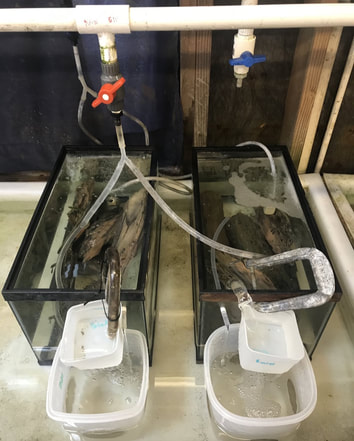 aquarium tanks set up to filter any larva released from shipworms burrowed in the wood aquarium tanks set up to filter any larva released from shipworms burrowed in the wood It has been buckle-down time to get my experiment set up. Three weeks have already gone by leaving only four weeks to collect data and prepare a poster for presentation. With Richard’s help, I set up two tanks fitted with fine mesh filtration containers and filled them with the wood collected from Haynes Inlet last week. If any shipworms release their larvae I should be able to collect it and use it for experimentation. Friday I got my first naturally released pediveliger larvae! I was only able to collects 10 individuals and if I do not get enough larvae naturally I will have to remove them by dissection as I have done previously. I would prefer the natural way though, because the larvae would be at optimal development to begin their free-swimming life stage. 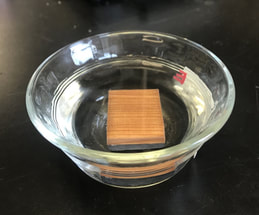 wood square for larvae to (hopefully) burrow into wood square for larvae to (hopefully) burrow into I have also begun preliminary tests with my previously collected larvae to see if they will settle and burrow into small submerged wood squares. The wood has been affixed to pieces of slate to keep them weighted down and placed into small dishes with 20 larvae added to each dish. So far I have observed six larvae using their foot to move around on the wood, but no burrowing behavior. Myself and the rest of the REU interns went camping this weekend at Sunset Bay State Park and were joined by biology REU interns from the U of O main campus in Eugene. We spent the afternoon exploring Sunset Beach and the evening roasting marshmallows and telling stories. Sunday morning, we were treated to a low tide that exposed an extensive intertidal zone at Cape Arago, perfect for tidepooling. When tidepooling in the San Juans, the elusive gumboot chiton, Cryptochiton stelleri, was the most prized discovery for my sister and I. To my delight, C. stelleri was everywhere I looked at Cape Arago! Nicknamed the “wandering meatloaf”, the gumboot chiton is the largest species of chiton in the world. It is a member of the phylum Mollusca (along with bivalves, octopus, and snails), and can grow up to 13 inches and 4 pounds! The REU Crew!
1 Comment
Ashley June
7/10/2018 04:09:09 pm
Yay! Thanks for the update and the shout out
Reply
Leave a Reply. |
AuthorHello, my name is Tiffany Spendiff. I am a third-year marine biology student and unrelenting bivalviaphile. This blog is an account of the successes, lessons, trials, and tribulations of a burgeoning marine scientist. Archives
August 2018
Categories |
Proudly powered by Weebly
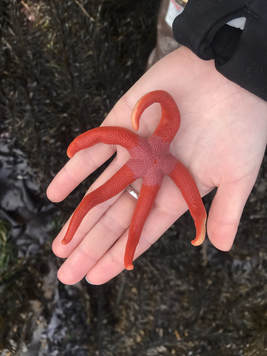
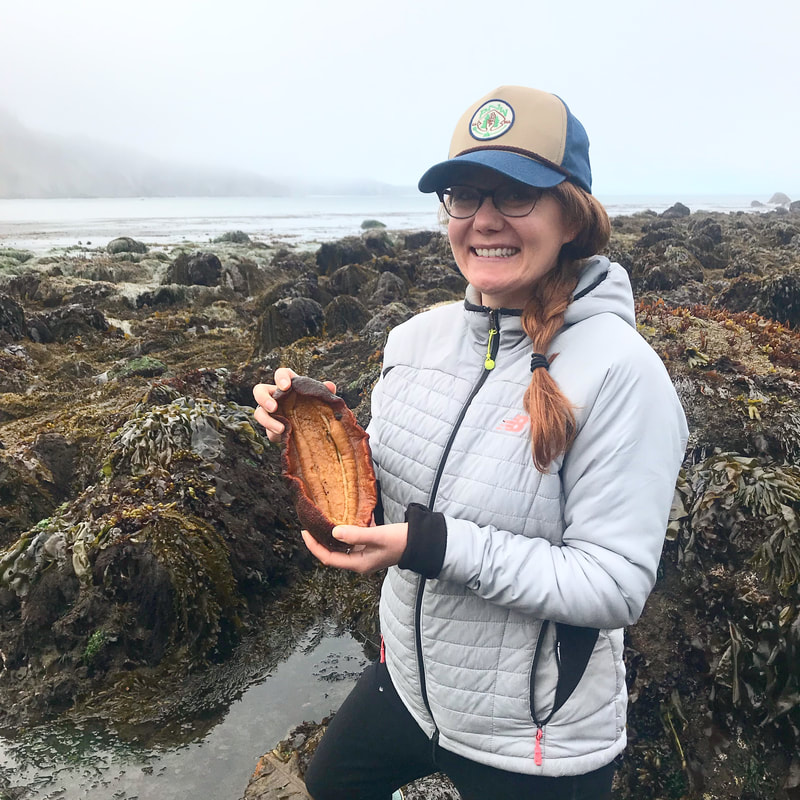
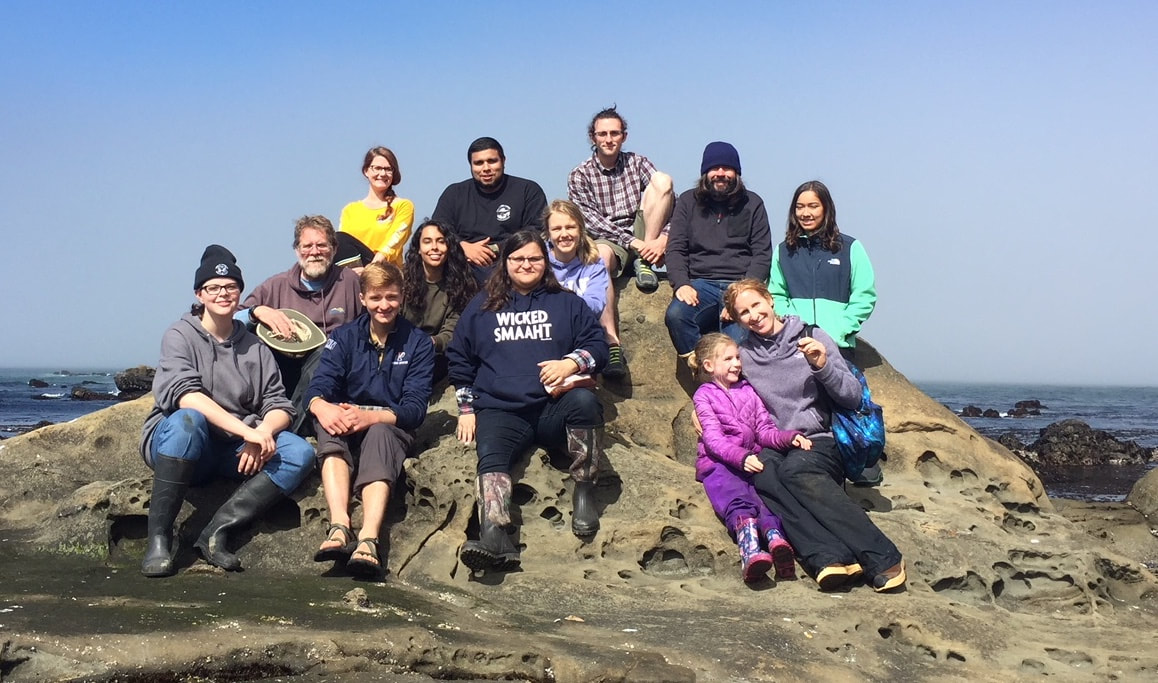
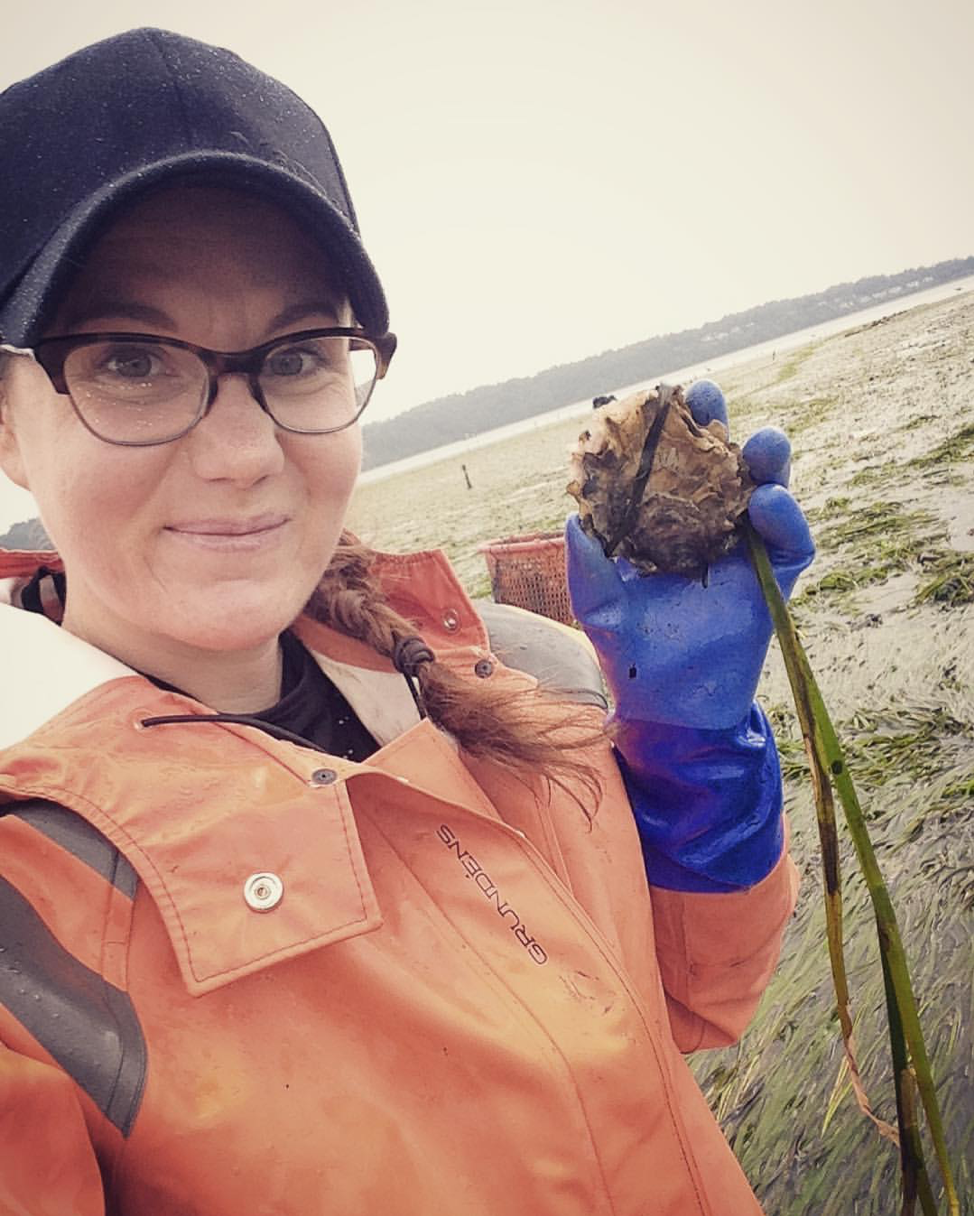
 RSS Feed
RSS Feed